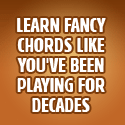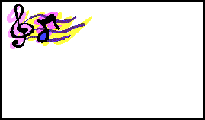The 3 Basic Chords
Mar 19th, 2008 by admin
This may be surprising to some people, but in fact most songs can be played with just 3 chords! The 3 chords are the I, IV and V chords of any key.
For example, in the key of C, these 3 chords are:
I - C,
IV - F, and
V - G.
If we were in the key of A, these 3 chords would then be A, D and E respectively. That is because in the A scale, A is the 1st note (I), D is the 4th note (IV), and E is the 5th (V) note.
Perhaps the above is oversimplified, but I hope you will get used to it, because after all the idea here is to try learning to play the piano the simplest way. ![]()
For those who would like things to be politically correct, the 3 chords we mean here are C major, F major, and G major.
And for those who have never played any chords before, a major chord simply means playing the “doe”, “me”, “so” notes together. Therefore, a C major chord is made up of the C, E and G notes (because C is the “doe”, E the “me” and G the “so” of the C major scale).
Similarly an F chord is made up of F, A and C notes (because F is the “doe”, A the “me” and C the “so” of F major scale).
In the same manner, G chord comprises G, B and D notes (because G is the “doe”, B the “me” and D the “so” of the G major scale).
The pictures below illustrate the C, F and G chords:
Figure 1: C Major chord
Figure 2: F Major chord
Figure 3: G Major chord
I guess this is enough for now.





[...] I say that most songs could be played with just 3 chords? In fact, the 3 basic chords may be “tweaked” a little bit here and there to give us many more other chords! As for now, [...]
[...] 20, 2008 by Les Hmye One thing I didn’t mention on “The 3 Basic Chords” post is that, to play a song using chords, usually the chords are played with the right hand, [...]
[...] ‘The 3 Basic Chords’, we came across the corresponding 3 bass notes for Chord I, IV, and V. These bass notes are [...]
[...] 12, 2008 by Les Hmye In fact, by combining the 3 basic chords on the right hand with different bass notes on the left hand, you can pretty much get all the [...]
[...] for now, there are still some tweaking we can do with the 3 basic chords that I should cover first. These include suspension and superimposition, just to sound [...]
[...] 7, 2008 by Les Hmye I have talked about Sus4 and how to improvise it with the 3 basic chords earlier. Sus2 is another form of suspension that can also be improvised with the 3 basic [...]
[...] that look very complicated? But really, let me say it again, you only need to know the 3 basic chords! Possibly related posts: (automatically generated)Don’t expect many more blogs til next [...]
[...] Hmye If you remember “the 3 minor chords”, and how we play them by substituting them with the 3 basic chords, and simply combining each of these 3 basic chords with a different bass note, then the summary is [...]
[...] must have noticed that the above makes use pretty much all “the 3 basic chords” and “the 3 minor chords”. In the key of C, the above translates [...]
[...] 29, 2008 by Les Hmye In “The 3 Basic Chords” post, we learned the following 3 [...]
[...] right hand doesn’t need to move much. That’s the beauty of improvising the 3 minor chords using the 3 basic chords! Possibly related posts: (automatically [...]
[...] minor chords can be improvised using the 3 basic major chords. See “The 3 Minor Chords” post to find out about [...]
[...] 2008 by Les Hmye I have done this song the “cheat” way — in the C key and using only the 3 basic chords (on the right hand). I hope a beginner, especially an adult beginner, will find this easy to [...]
[...] it such that you only need 4 chords on the right hand to play the whole song. This 4 chords are the 3 basic chords of the A key, i.e., A, D and E chords; and the G [...]
[...] all. You only need the 3 basic chords (I, IV and V) to play this song (on your right hand, that is). Well, except a C4. Please see [...]
i can’t get it. what is scale? i haven’t encountered that yet. how do you get the chords of the keys? will you please explain?
A scale is a series of notes. There are many different types of scales, e.g., major scale, minor scale, etc. A major scale, which is the most common and basic, is the series of notes that go… “doe”, “re”, “me”, “far”, “sow”, “la”, “dee”, “doe”. So, a C scale is the series beginning from the C note. An E scale, for example, would be the series beginning from the E note. The notes for a C major scale are: C-D-E-F-G-A-B-C. The notes for an E major scale are: E-F#-G#-A-B-C#-D#-E. Therefore the 3 basic chords (I, IV and V) for C key are: C chord (I), F chord (IV), and G chord (V). Whereas, for an E key, the 3 basic chords would be: E chord (I), A chord (IV), and B chord (V).